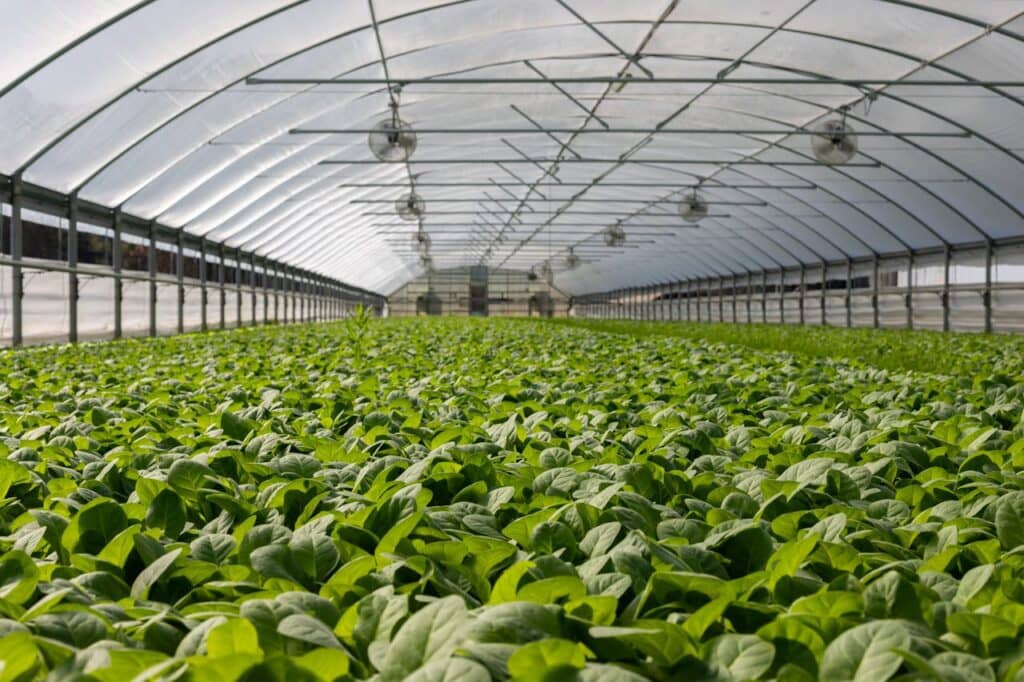Today well be talking about urban farming in general. what is urban farming? what are the advantages of urban agriculture? The practices involved and how it’s done. Most people still believe in the myth that agriculture takes place only in rural areas which isn’t true.
People have practised urban farming for thousands of years by growing crops and rearing animals in the vicinity of their homes and settlements. The ancient Egyptians, the Persians, the Greeks, the Mayans, the Africans and the Indians all practised this.
They grew fruits, vegetables, herbs and crops like beans, maize, potatoes, rice, wheat and yams. The ancients also reared animals; cows, goats, sheep and pigs, birds; chicken, ducks and fowls. Urban farming is therefore not something new.
Today science and technology have simplified and revolutionalised things; great yields can be got on a small piece of land and also some agricultural activities can be done at the tap of a button or by pressing a switch for example irrigation and milking. The modern urban farmer also doesn’t have to worry much about the big bad wolf due to improved security systems.
That being said, urban agriculture is not rocket science and can be done by everyone irrespective of location. Modern farming systems also allow you to do urban agriculture in your bedroom so you have no excuse not to grow food at all.
Urban farming is also very relevant to us since the majority of people around the world are clumped up in cities and slums yet they have to eat every day; sometimes four times lol.
Contents
what is urban farming?
Urban farming involves growing plants and rearing animals in the city; in and around homes, on the rooftop, balconies, and urban farms. It’s mainly done in a smaller area due to lack of space for commercial farming. However, people with relatively large land can set up actual structural farm structures.
Different kinds of plants can be grown namely;
1.Vegetables: tomatoes, cabbages, microgreens
2. Spices: ginger, garlic,
3. Fruits: oranges, apples, bananas, melons, peaches
4. Herbs: Aloe Vera, mint, sage,
5. Flowers: chamomile, tulips
6. Food crops: corn, bananas.
Birds like chicken, ducks, geese and turkeys can also be reared. Animals like goats, sheep and cows are reared but not necessarily on a very large scale. Fish and sea food can also be grown in tanks in aquariums.
Traditionally, plants can be grown in anything from plastic bottles, containers, cans, old tyres, tins, sacks. Box gardens can also be made for growth in plants.
Sheds and small structures like hutches, pens, cages are made for animals and birds. These can be raised or constructed on the ground. Trees and fruit trees like mangoes, oranges, apples, peachesand guavas can be planted around the house or in orchards.
However, very modern urban farms like hydroponics, vertical farms, recirculating aquaculture systems and aquaponics utilise sophisticated equipment which we will discuss later on.
Larger urban farms which grow on a large scale exist. Vertical farms like aero farms, square roots grow, Gotham greens, freight farms, and splash of green profusely grow vegetables on enormous tall raised stands with sunlight in greenhouses or indoors using led light technology.
Hydroponic farms like American hydroponics grow vegetables in a water substrate in large numbers. Other large urban farms that rear fish and grow animals also exist.
Types of urban agriculture
Urban agriculture/ farming is a very broad subject but these are the major categorisations;
1.vertical farming
2. Greenhouse farms
3. Indoor farms
4. Backyard farms; box-gardens
5. Rooftop farms
6. Aquaculture; aquaponics, RAS
7. Hydroponics
8. Vermiculture
9. Apiculture
10.Poultry production
11. Animal husbandry; goats, cows, sheep, pigs.
12. Orchards
13. Floriculture
14.Mushroom growing
15. Rabbit rearing
We shall be discussing each of the topics in detail in the coming series. Well now that you know what urban farming is. Lets dive into the advantages of doing urban agriculture.
19 remarkable advantages of urban farming you should know today

19 remarkable advantages of urban farming you should know today.
1. Saves money
One wouldn’t need to go to the market to buy vegetables, milk, eggs or even chicken if they grow plants and rear birds or animals in their home steads. The money that would have been spent on such necessities can then be stowed away and used for other things. Imagine what an extra 100$ would do for you if you saved it weekly.
2. Environmental beauty
Plants and flowers beautify homesteads and add more to the décor. Flowers and certain plants also have good scent. Certain plants can also be used as repellants for vectors like mosquitoes and certain animals like snakes.
3. Shade
Trees at home provide shade and cool environments as shelter from the sun. The shade can be used for resting, reading, parking, playground…etc.
4. Health benefits
Herbs grown at home can be used as ailments and cures for certain diseases and allergies. Urban farmed produce also results into a balanced diet as the veggies, eggs and meat raised at home are consumed by the home owners. This helps combat malnutrition illnesses like scurvy, kwashiorkor and results in people living healthy lives.
5. Source of income.
Surplus vegetables and fruits can be sold to the market to make a living. Unemployed people can also do agribusiness and earn a living by growing and selling vegetables, seedlings, eggs and birds. These businesses can also be scaled to save money hence making the owners rich.
Large urban farms like Aero farms and Gotham greens create employment for people and they also generate a lot of money selling their fresh produce to the urban market.
6. Conservation
We live mostly in the urban jungle surrounded by concrete and buildings. With the ever increasing impacts of the human population on the environment, the only way we can contribute to the earth’s diversity is to allow nature live with us in our homes and reduce our carbon footprint. This will help to reduce on greenhouse gases. Moreover, plants purify the air and provide us with oxygen.
7. Source of food
The plants and animals can be used as food for home consumption. This is true especially for people living in dry climates, areas with no arable land and war stricken zones where urban farming techniques like indoor farming can be employed to grow crops, feed the people and avoid starvation.
8. It facilitates recycling
Kitchen refuse can be used as animal feed instead of going to waste. Waste from one farm input can be used in another facilitating efficient usage of resources forexample in an aquaponics unit where waste nutrient rich water from fish is used to grow vegetables which in turn purify the water and its transferred back to the fish.
9. Job creation
Urban farming creates employment opportunities for people as gardeners, grocery store owners, farm owners and business people. Agriculturalists like vets, agronomists and soil scientists and other green professions can get jobs by offering their services to people.
10. Carbon emission reduction
Plants reduce our carbon print by absorbing carbon emissions released from vehicles and aerosols thereby reducing the overall greenhouse effect. This helps in climate modification and rainfall formation.
11. Effective use of land
Land and space can be utilized effectively and productively per unit area since a large number of crops can be grown in a confined place yet with an overall large output. Also, land and space that would be left vacant can be used to grow crops and rear animals.
12. Possibility of integration
The farms can also be integrated such that refuse from one unit can be used in another for example animal manure being used as crop fertilizer or water from a fish unit being used to irrigate crops. Apart from minimizing costs, there is efficient energy flow and waste reduction.
13. Use of un arable/ barren land
The possibilities are limitless. Farming can still be carried out in the desert, tundra and even rocky places since structures like greenhouses can be erected and plants grown in a raised, controlled environment.
14. Farming all year in and out.
Farming can be carried out all year round irrespective of season due to the controlled environment in most urban farming systems and indoor farms. Use of led lights to grow crops also facilitates crop production without the need for sun. Besides there is also need to wait for rain since irrigation systems can be put in place.
15. Possibility of automation
Technology has made life greatly easy today in all areas of life even farming which has taken things next level. From automatic irrigation systems, milking machines, egg collecting machines, automatic feeders and cleaners, everything can be done by just pressing a button or a switch. So there isn’t much excuse as to why you can’t have a garden today.
16. A variety of crops can be grown in a small area.
Different varieties of plants can be grown in the same unit to serve different diets, market needs and company goals. This is especially true in vertical farming where plants can be stacked. There’s maximum space utilization, profit maximization, labor maximization and balanced effective resource usage.
17. Easy control of pests and disease outbreaks.
The fact that urban agricultural systems are carried out in relatively small spaces, pests and diseases are easy to control and mitigation measures can be efficiently employed like; foot baths, spraying along with irrigation, easy identification of sick plants and animals.
18. Easy management.
The farms are easy to manage and with the possibility or automation, things become very easy. The farming tasks are not very tedious and larger farms can always take advantage of the cheap labor present in the city to work on their farms.
19. The products have ready market.
You can never go wrong if you grow food in the city with all the large number of people and mouths to feed. People like fresh and organic food. You can set up a stall outside your farm and sell farm fresh, deliver to home steads, supply to supermarkets and grocery stores and become rich lol. Products like eggs, milk, fruits, vegetables, meat, herbs, and spices are on a high demand and have very ready market.
conclusion
Majority of the world’s populations are living in cities and suburbs and these are not food growers. The burden of food growing is therefore carried by country/rural people who strive to feed the masses.
Not forgetting the land shortages caused by poor land tenure system, industrialization, and the little amount of arable land, pollution, and urbanization reduces the amount of agricultural land.
Food security is also very poor with millions of people worldwide experiencing hunger and starvation. Other factors like climate change which affects seasons, natural calamities like floods, locust invasions, drought, famine, tornadoes and hurricanes affect food stability. The need for urban farming as an everybody practice is therefore urgent and should be adopted. You don’t need much to start growing today.

